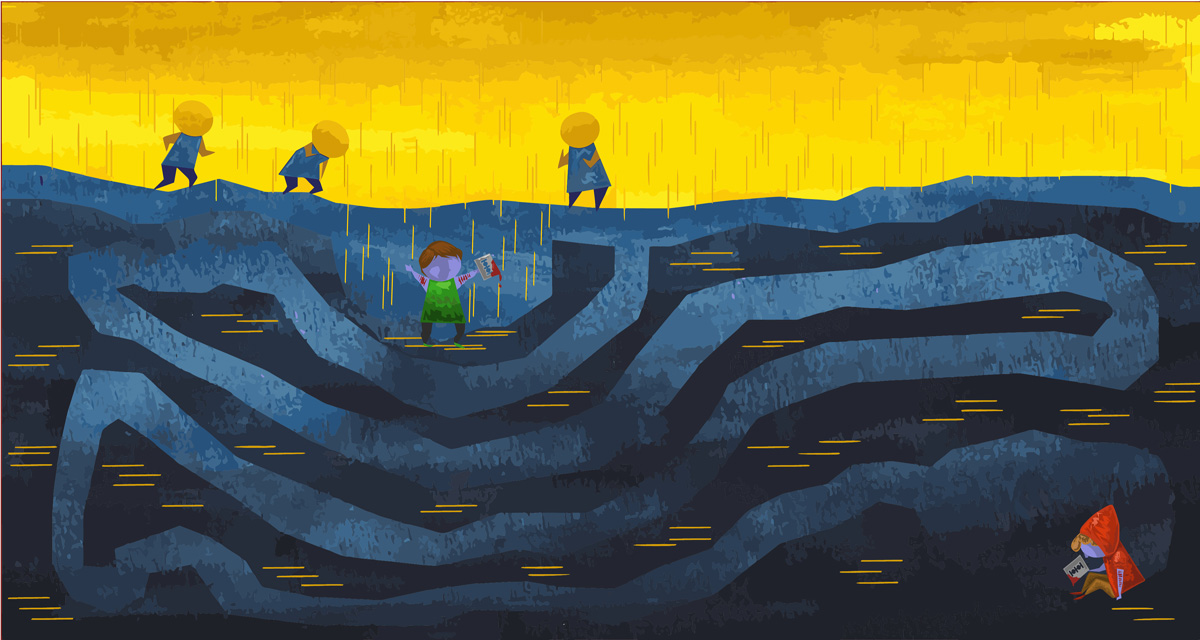

I am confused with how to distinguish fake depression from an actual case of clinically diagnosed depression and it troubles me. I am troubled with the implications of their words and actions. Are they suppose to be loud or quiet? Is dealing with it supposed to be an obvious thing or should it be in secret? I still find it difficult to determine one from the other and how to respond appropriately and I found myself slowly coming across this thin line as I befriended people of my age who speak so bluntly about suicide. It worries me that because of this confusion, I’m missing out on an even bigger picture.
I have recently been caught up in several cascading conversations on the idea of suicide. I pay attention to what they say because it is indeed that alarming to hear one speak of the open choice of ending one’s life. I always empathized and imagined what it must feel like to feel so low and helpless, to be left with no other choice than to end it all.
But I sometimes just can’t help but doubt when the conversations with the same set of people making claims that they’re depressed and suicidal despite having no actual diagnosis become redundant. I see their daily puffed-up eyes revealing long sleepless nights with their pillow wet in tears. I peer at the shallow lines drawn on their wrists revealed by the short sleeved tops they wear as if to flaunt their wounds to whomever would notice while they speak of the limbo they had with death–with what seems like a sense of pride. I remind them that it was wrong. I tell them to get enough sleep, stop crying and stop slitting their wrists. However, with the repetitiveness, I find it more and more difficult to empathize with what they say.
Discussing depression is very difficult because people get offended when they feel that their feelings have been questioned or invalidated. People are often displeased when I become an unsatisfied audience who calls out their failed skits to ask for assurance and attention. They are insulted when I dare question them and their reasons for protecting and claiming a “feeling” that has broken who they are. Depression will always be a sensitive discussion, a touchy subject to those whom are truly dealing with it and when questioned, will always be an insult to those whom are simply acting to be.
“I sometimes just can’t help but doubt when the conversations with the same set of people making claims that they’re depressed and suicidal despite having no actual diagnosis become redundant.”
One must not invalidate another’s feelings or craving for assurance. They’re feelings are as equally important as to someone clinically diagnosed with such and must equally be respected. But because they are louder, more verbal and expressive, people like me tend to find ways on how to help them rather than how to save those who really need saving – those silently hiding their own disorders in fear of being noticed, the same people who have actually tried to take their lives once or twice but failed to.
And no, this is not their fault. Despite their false pretenses, exaggerated means and overused play of the mental-health card, the bigger problem and the fault are ours. It is on us for not determining what it’s like to be actually clinically depressed and for being confused by those claiming to be depressed. We are at fault for not knowing how to distinguish a performance from a truth, a mime from a person, a fake from an authentic. And yet, we still question why lives are being lost minute by minute. As a matter of fact, current statistics from the Union of Catholic Asian News show that at least 6 individuals commit suicide everyday in the Philippines.
With the exposure to these conversations, I understood that feeling depressed was like being on a sinking ship or being in burning house passively watching it crumble before our eyes because there seems to be no way out. Then that’s where it hit me. What if the sinking ship was an imagined one? What if the house was never really on fire? People are just swollen up by the idea of depression without actually really being.
We tend to be blinded by the façade people wish us to see, so in return, we neglect those who would have traded everything just to be heard. We have been so confused between the parrots of the mimic and the acts of a truly depressed suicidal that we fail to differentiate one from the other. We no longer ask because we assume that these are how they are stereotyped to be – verbal about death, overly emotional and extremely sad – but unfortunately, that has not always been the case.
I believe that there is a fine line between the mimic and the authentic, a line so thin that most people never distinguish it. This is where we fall short. We touch the surface of the problem without completely addressing it.
I have always wondered why no one talks about the real elephant in the room. Why have we deprived our knowledge of action? Unfortunately, it somehow seems that people are so focused on understanding why they happen instead of knowing how to prevent more deaths from happening.
“We tend to be blinded by the façade people wish us to see, so in return, we neglect those who would have traded everything just to be heard.”
We have started addressing its roots by determining the reasons as to why suicides occur. We have also set a radar-count for the deaths per second for diagnosing possible triggers of such act for prevention. For that, we have been made aware; aware that suicide can be triggered by stress, toxic work environments (whether in school or at home), family issues, bullying and a long list of more. We have also been made aware that suicidal thoughts chooses no age or gender. However, awareness without action is pointless.
We have solutions that are merely enough. We have to stop merely knowing the cause of stress but rather start asking what we could have done to lessen it. Instead of blaming the toxic environment, address the toxicity by pointing out the need to fix the school system. Lend an ear but also remind them that the ears that need to be lent to them are of professionals and experts who could give action to that matter. Prevention does not end with simply knowing the cause; it only begins there.
We could have saved more if more schools offered routine clinical check-ups and diagnosis for mental well-beings rather than merely stressing on suicide on the suicide-prevention month or lame orientations with by-the-book reasons why not to do it. The traditional promotion of the suicide-prevention month once a year could have been endorsed all-year round. Instead of having boring and ineffective seminars and talks on why suicide should never be a choice, schools could have prioritized adding mandatory clinical tests and diagnosis with more advanced technologies to determine the state of a student’s mental stability.
“If our efforts and support to listen to those who are loud enough to be heard were as much as for those whom are unable to find their words, more doors of those in fear to speak up could’ve been opened and more emotionally and mentally unstable could’ve had someone to lean on.”
The existence of the suicide-prevention hotlines will not suffice prevention; the hotline’s effectivity must be given much more attention. Once effective, these hotlines are what we can give who actually need them, not to those only in need of ego-boosting cheers and pats on the back. The immediate skilled counselings by experts brought about by these hotlines are often given to people who merely needed the comfort and assurances that we ourselves could have given. Eradicate the stigma; refuse to be manipulated by it. Establish an environment where seeking for help from these hotlines are okay and accepted.
If our efforts and support to listen to those who are loud enough to be heard were as much as for those whom are unable to find their words, more doors of those in fear to speak up could’ve been opened and more emotionally and mentally unstable could’ve had someone to lean on. Our enthusiasm in recommending doctors and mental sanctuaries for people who are not even psychologically ill should have been for someone who actually needed the diagnosis and treatment.
Prevention merely starts here. We could have saved more lives if we knew the difference. This difference, who knows, could finally possibly make the difference.